What is Balance in Photography?
Particularly for new photographers, understanding concepts like photography balance can be difficult. Essentially, balance in photography is based around composing your image with an eye on visual weight, and achieving a final photograph so that all of the individual elements in your picture add up to one cohesive whole.
But, visual weight for individual parts of your image varies across the photo according to the various tones, colors and lightness of your subjects, meaning that it can be quite a juggling act to achieve the correct balance.
This is where the various techniques for photography balance come in, with each providing you a framework that can be applied to your photos to help you achieve balance without having to work it out from first principles.

What are the Types of Balance in Photography?
The main types of balance in photography, which can be used as frameworks to more easily balance your images are:
- Symmetrical / Formal Balance
- Asymmetrical / Informal Balance
- Color Balance
- Analogous Photography
- Tonal Balance
- Conceptual Balance
And within each of these, you can also think about concepts like:
- Depth of Field
- Negative Space
- Texture
- Light and Shadow
We will explore each of these types of photography balance, and will see plenty of balance photography examples so you can more easily understand how to use each framework in your own photography.
Symmetrical Balance in Photography
Symmetrical balance in photography is also known as formal balance photography.
Symmetry in photography is a type of balance that is achieved when the elements in your photo are arranged so that they are mirror images of each other on either side of a vertical, horizontal or diagonal line. This type of photography balance is often used to create a sense of order and calm in an image.
When using symmetrical balance in photography, it is important to make sure that both sides of the image are balanced, with the same visual weight. This can be done by making sure that the elements on either side of the symmetry line are similar in terms of size, tone, color and lightness.
One way to create a sense of symmetry in photography is to use reflections in water or mirrors. For example, you couls use a symmetry line that flows diagonally across the image, running from the lower left corner to the upper right, or use reflections in water to provide a perfect mirror image of the scene on either side of the line.
This is horizontal symmetry in photography, which is achieved when the elements in your photo are arranged so that they are mirror images of each other on either side of a horizontal line. This type of photography balance is often used to create a sense of stability in an image.
Follow the link for a good turorial on the various types of symmetry that you can use in your photos.
Example of Formal Balance / Symmetrical Balance
One way to create a sense of symmetry in photography is to use repeating objects or patterns in your composition. So you could use a repeating pattern in the tiles on the ground, as well as in railings and windows. This repetition draws your eye across the image and can also be used to direct the eye onto the main subject, if there is one.
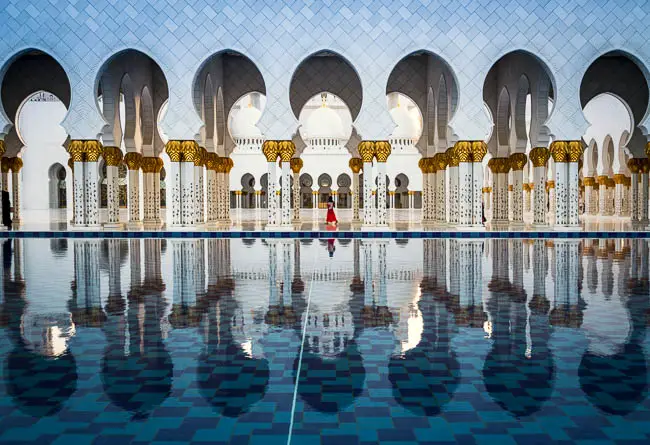
Vertical symmetry photography is achieved when the elements in your photo are arranged so that they are mirror images of each other on either side of a vertical line. This type of photography balance is often used to create a sense of strength and stability in an image.
You can use this type of symmetry by using objects or patterns that run horizontally across your image.


Radial symmetry photography is a type of balance that is achieved when the elements in your photo are arranged around a central point, like the spokes of a wheel. This type of photography balance often gives an image a sense of movement and dynamism.
When using radial symmetry photography, it is important to make sure that the elements are spaced evenly around the central point.
You can create radial symmetry in photography by using objects or patterns that radiate out from a central point. A good example of this is the spokes on a bicycle wheel, but you can also use objects that radiate out in a sprial.
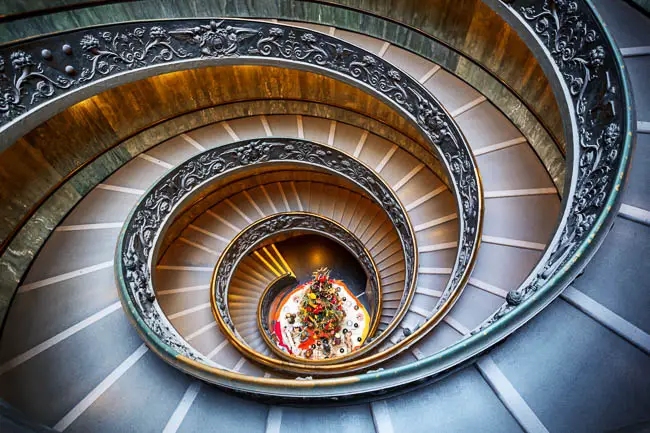
Asymmetrical Balance Photography
Asymmetrical balance photography is also known as informal balance in photography
Asymmetry in photography is a type of balance that is achieved when the elements in your photo are not arranged so that they are mirror images of each other on either side. This type of photography balance is often used to create a feeling of tension and unpredictability in an image.
When using asymmetry in photography, you can create visual interest by positioning the main subject off-center. The rule of thirds is very helpful for this.
Asymmetry is one of the most used forms of balance in professional photography, as it lets you create a more complex photo, and gives you far more options in your composition.
Example of Informal Balance / Asymmetrical Balance
You can also use asymmetry in photography by including a secondary element that draws your eye into the image from one side.

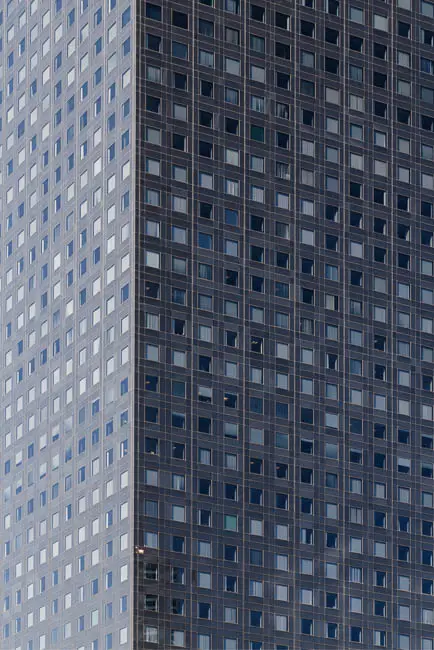
Asymmetry photography is frequently used to create a feeling that everything isn’t quite right with your photo. The use of visual weight can help you achieve this. This means that you want to make sure that the main subject in your image is the most visually weighty element, and smaller objects have less visual weight.


Color Balance Photography
Color balance photography is the technique of adjusting the colors in your photo so that they have a sense of harmony. This can be done by adding or removing color casts, or by changing the colors to make them more complementary.
When adjusting the colors in your photography, it is important to keep in mind the mood that you are trying to create. For example, cool colors typically create a feeling of calm and serenity, while warm colors often create a feeling of excitement and energy.
Essentially, you can achieve color balance in your photography by balancing bright, vibrant colors that have a high visual weight, with soft, more muted colors surrounding it. This often works best when combined with either symmetrical or asymmetrical balance.
Color Balance Photography Example
When using color balance photography, you can create visual interest by having your main subject stand out against an otherwise monotone background. In this first example, I’ve chosen the Torii gate as the primary element, and placed it in the center of their image, balancing it against its opposite color, the blue of the sky and water.

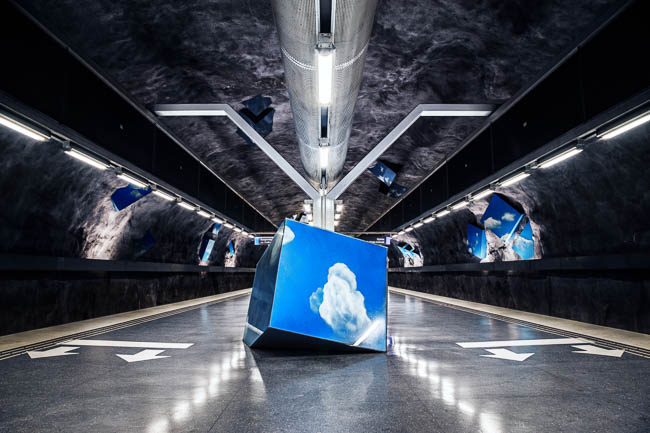

Analogous Photography
Analogous photography is a type of photography balance that is achieved when the elements in your photo are mostly made up of colors that are next to each other on the color wheel. This type of photography balance can often be used to create a harmonious and calm composition, and is related to color balance, although is a more refined version of it.
Analogous Photography Example
By keeping a reduced color palette of related colors, you can more easily create a ‘feel’ for your photos, in this case a cold landscape and a misty morning. Using a wider range of colors would lose a lot of the emotion that you get when looking at these images.

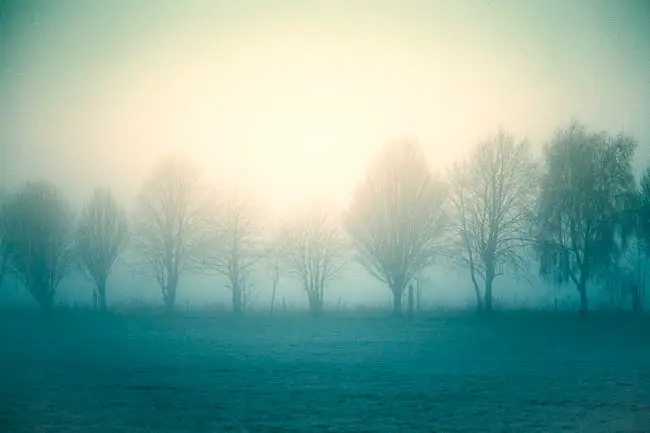
Tonal Balance in Photography
Tonal balance photography is the technique of adjusting the tones in your photo so that they have a sense of harmony, and is predominantly used for black and white photography as it refers directly to the lightness and darkness of elements of your image.
When adjusting the tones in your photography, it is important to keep in mind the mood that you are trying to create, with light tones easy on the eye and darker tones feeling much heavier. Therefore, the darkest and lightest spots ideally need to be placed apart from each other, with a distinct gradient joining them in order to create balance, although with some skill it is possible to directly position opposing tones next to each other.
Tonal Balance Photography Example


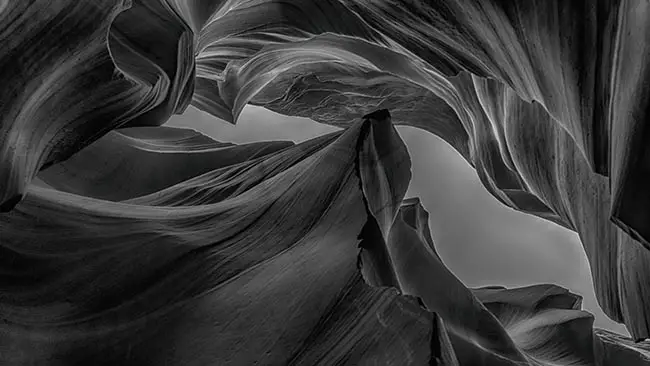
Conceptual Balance in Photography
Conceptual photography balance is the technique of arranging elements in a photograph so that they create a mental image or idea in the viewer’s mind. This type of photography balance is often used to create surreal or abstract images, and is less about creating a sense of symmetry or order, and more about evoking an emotion or feeling.
Conceptual photography can be achieved by using objects that have an unusual shape or form, by using dissimilar elements within the frame, or by using negative space to create a sense of ambiguity.
Conceptual Photography Example
The below conceptual photography examples use negative space to great effect to create a sense of ambiguity. By positioning the main subject off-center or leaving most of the frame completely blank, they invite the viewer to use their imagination and come up with their own interpretation of what the purpose of the object in the frame is.




Balance Photography at Home
So how can you use these techniques at home, for your own photography?
The good news is that you don’t need any fancy equipment for any of this – you can even use your phone if you want.
All it requires is for you to get your eye in, and start to see the various types of composition that surround you.
There’s plenty of balanced compositions around you already, likely some within your eye line right now. Think about:
- Houses
- Windows
- Doorways
- Bookshelves
- Crops in a field
- Ponds and lakes
- Bicycle wheels
Then take these ideas, practice trying to recreate all of the types of balance, and soon enough they will become like second nature, helping you to create your own stunning photos.
Read More:


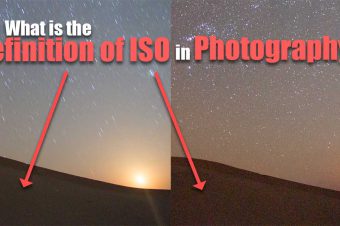


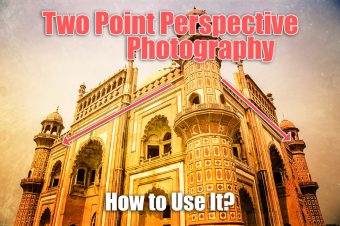
Leave a Reply